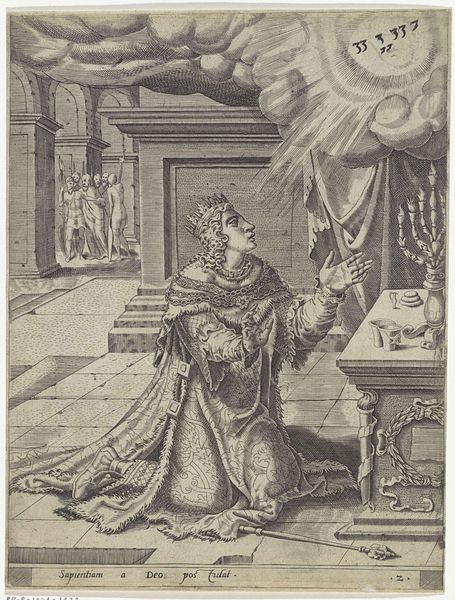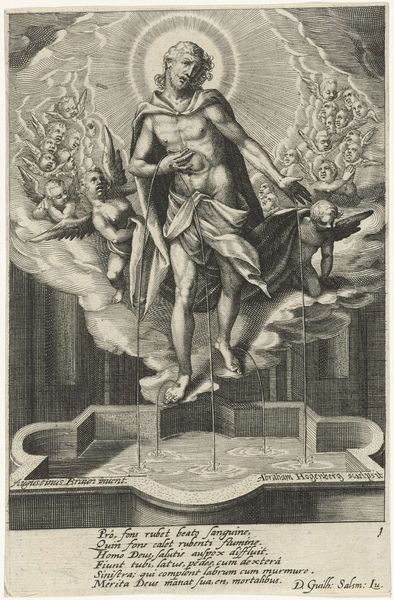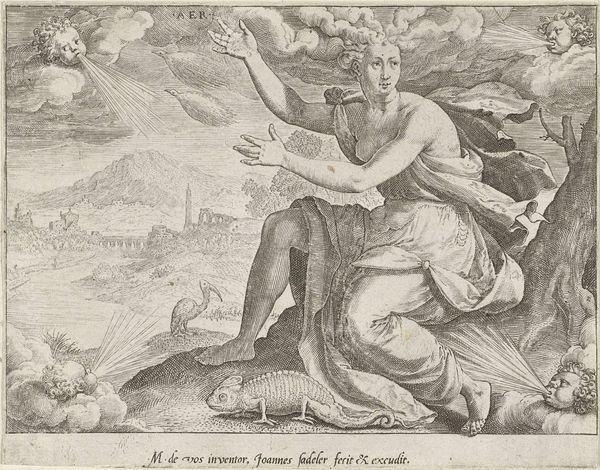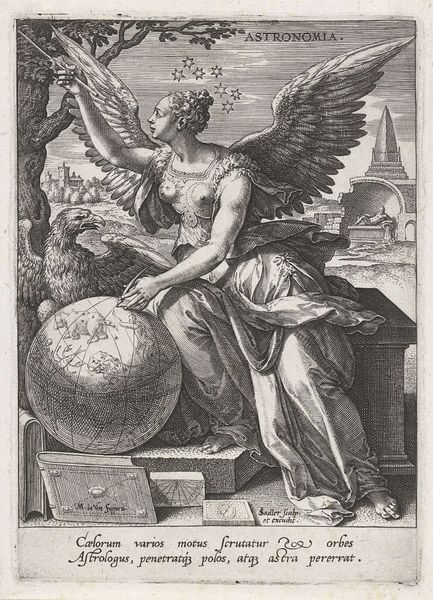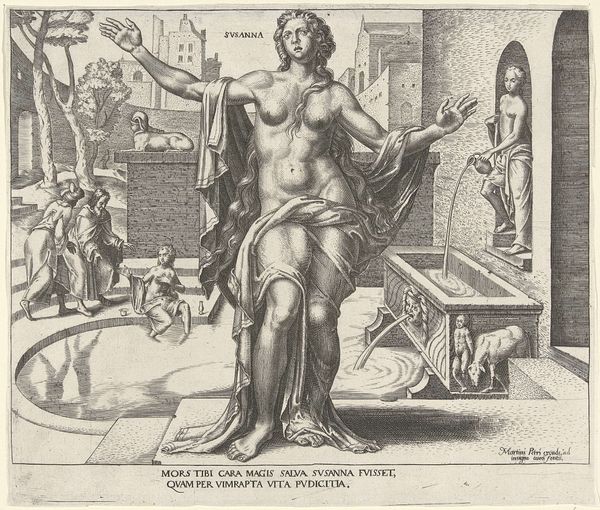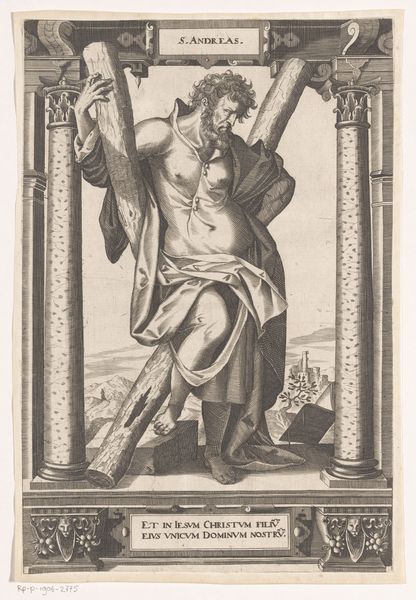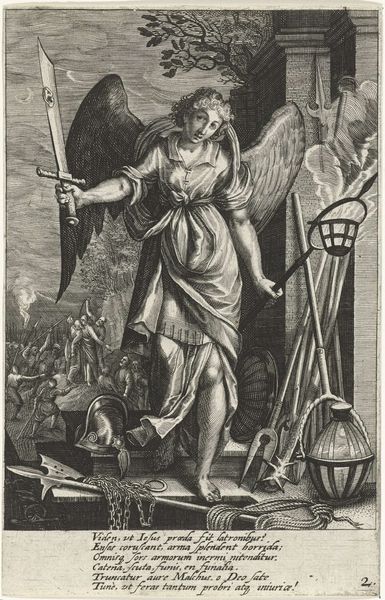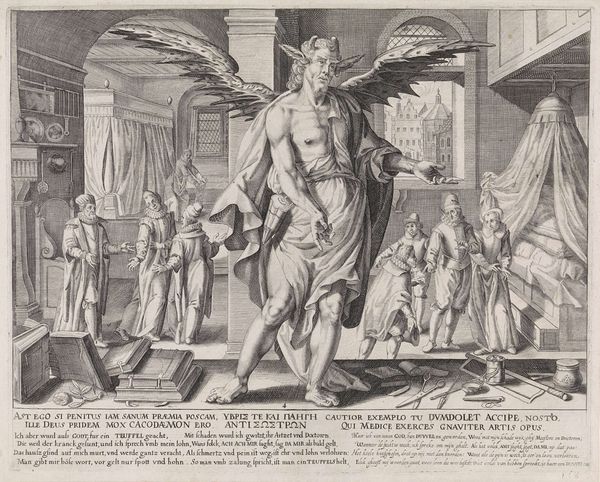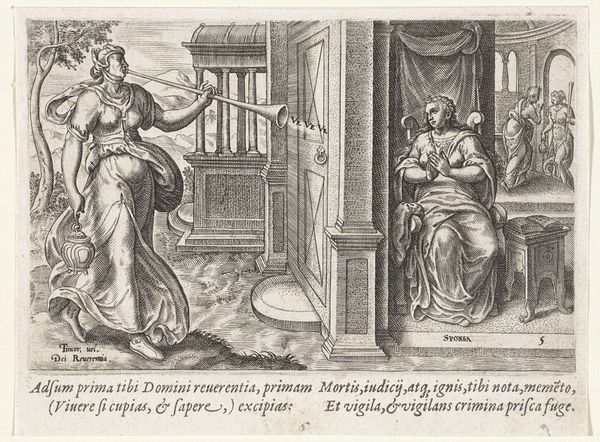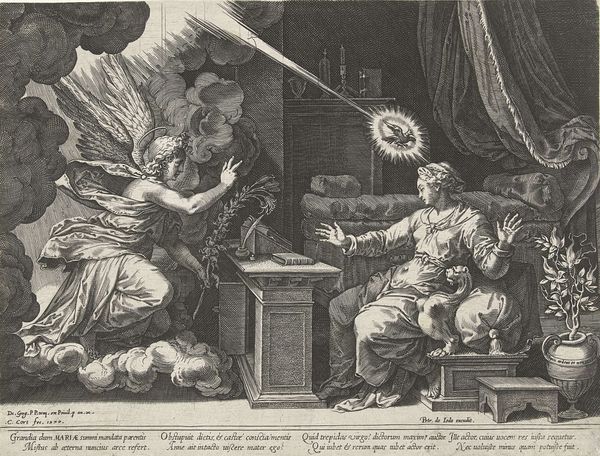
#
comic strip sketch
#
mechanical pen drawing
#
pen illustration
#
pen sketch
#
pencil sketch
#
junji ito style
#
personal sketchbook
#
pen-ink sketch
#
pen work
#
sketchbook drawing
Dimensions: height 200 mm, width 245 mm
Copyright: Rijks Museum: Open Domain
Curator: This is "Jaël," an engraving made around 1560-1570 by Philips Galle. It's currently housed in the Rijksmuseum. Editor: It’s stark. The contrast is immediate, pulling my eye to the figure holding the hammer and what I think might be a stake. The fabric rendering is incredibly detailed for a print. Curator: The print illustrates the biblical story of Jaël, who assassinated the Canaanite general Sisera. Note how Galle, drawing from interpretations prevalent at the time, casts Jaël as an almost allegorical figure. She represents pious strength and even divine justice, despite the violence of the act. Editor: Right, and the composition reinforces that. Jaël is central, nearly statuesque. The lines radiating from the halo behind her emphasize her importance and separate her visually from the sleeping Sisera in the tent. I’m also struck by how deliberate each line is; Galle's mark-making creates depth and weight, particularly in her drapery and the ominous hammer she wields. The rigid architectural block to her left contrasts nicely with the vulnerable scene in the tent. Curator: Exactly! These depictions reinforced moral and political messages about duty and piety. Consider the intended audience: such prints circulated widely, shaping popular understandings of biblical narratives and ideal female virtue within a highly politicized religious landscape. This image served to both commemorate the power of devotion and instill moral behavior in those who encountered the print. Editor: It’s fascinating how the visual language of the time – the halo, the strong central figure – lends legitimacy and even holiness to a brutal act. There is even some sense of an antique relief; note her feet! I'm just captivated by the line work and form. I suppose context helps me see it within the world of the 16th Century but Galle has truly left behind an outstanding image. Curator: Absolutely. Understanding this engraving requires us to consider its place within a broader context of religious reform and political upheaval. Editor: A powerful piece—formally captivating and narratively chilling. Curator: A compelling example of art functioning as both a moral lesson and a socio-political commentary.
Comments
No comments
Be the first to comment and join the conversation on the ultimate creative platform.
